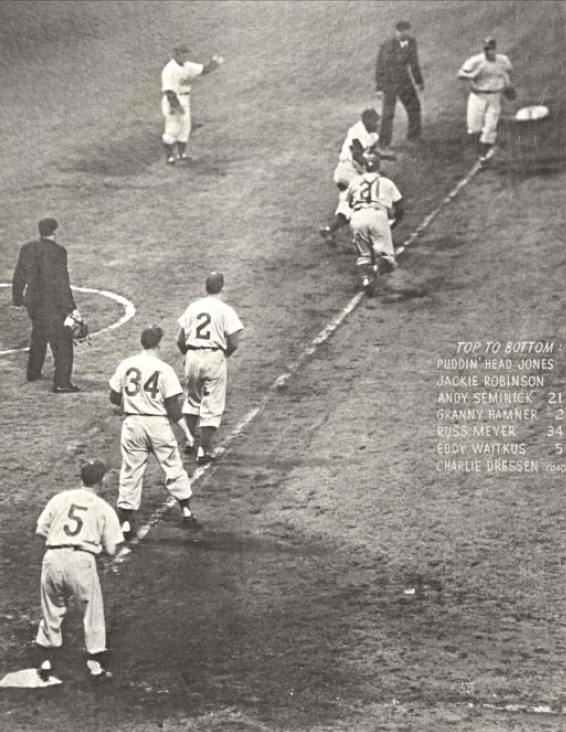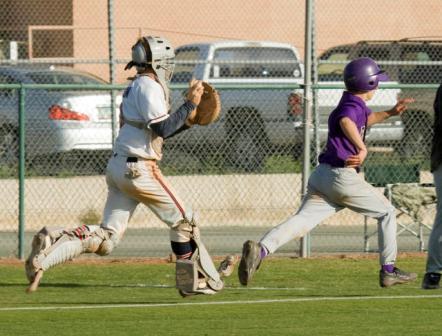 |
||
~ Baseball Rundowns: The Fewer Throws, The Higher Your Success Rate ~ The image above is a wonderful look at what a tremendous baserunner Jackie Robinson was, managing to keep from being put out long enough that 5 Giant players became involved in this rundown. As a defensive team your goal is to keep your rundowns with 1,2 or 3 players. The fewer players and throws the better for the defense. Baseball rundowns, a fun and exciting activity from your back yard and neighborhood park days. In your youth, often referred to as a "pickle".
What is involved here is a base runner, who by various means has managed to get himself caught up between two bases. This base running dilema immediately engages two or more infielders, in an attempt to tag the errant runner out.  In the above picture, the base runner has become stranded between third base and home plate. Regardless of the location, I was always taught, and thus have always taught that the method is the same, no matter which base you are in between. There are generally three schools of thought:
Let's Look At The Theory Behind Each Baseball Rundown MethodNever Run The Base Runner To The Base Ahead The basis of this rundown theory is that, should the defense make a mistake, then the runner is safe with no advancement. You lost the out; but you didn't give up a base. It Doesn't Matter Which Base You Run Them To, Except Between Home And Third Here the school of thought is that the defense is willing to take the chance of having the runner safe at the base ahead, except at home plate, where it gives up a run. It Doesn't Matter Which Base You Run Them To, No Matter Where You Are The method here is to make as few throws as possible, none, one or at the most two, believing that with each added throw comes the greater possibility of a mistake. So Which Way Is Better?What you like best and choose to use is dependent upon your philosophy, personality and style within the game. There is no right or wrong answer for this, except that it needs to feel right for yourself. As I mentioned earlier, I like the third method, feeling that we are going to drill this skill hard, with an emphasis on getting on it quick and shutting it down. Execution will overshadow mistakes, more times than not. Inside The Baseball Rundown
Baseball Rundown Tips ~ From the Dugout
Secrets To Successful Rundowns
Summary Of Baseball RundownsOne of the hallmarks of solid baseball rundown defense is player decisiveness. It doesn't matter which rundown philosophy you adopt; but it does matter that your players execute it with decisiveness. Too many throws, players pump faking the runner, and not getting after the runner at full speed all lead to lost outs, advanced bases and runs scored. Ultimately a team pays for the lack of execution with a big loss of confidence. return from baseball rundowns to theoleballgame.com  |
  |
|
 |
||
|
| ||